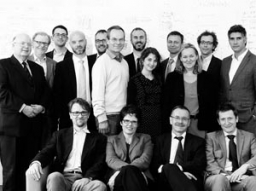The decarbonization of a nation is a massive challenge. Each potential area of activity has the depth and complexity to consume the resources of those working to spark change. Focusing on the principal factors that determine carbon emissions will be of critical importance.
- Government Protection: Overcoming preferential treatment of energy intensive industries via subsidies, exemption and special status (metals, engineering, manufacturing, forest and chemical industries modernized Finland’s economy in the twentieth century and raised the standard of living).
- Decoupling Growth & Emissions: Finland’s national carbon sink capacity is roughly equal to its 1968 carbon emissions level (33 Mt CO2/a). A reversal to 1968 GDP levels is not a feasible mitigation approach—a transitional strategy is needed to push down Finland’s emissions curve while allowing growth to continue. Binding emissions reductions to economic growth should be the long-term goal.
The World Bank provides a picture of the strength of Finland’s economy at the projected time of carbon neutrality, compared to present day:
- Evidence: Transitioning to a low carbon economy will require evidence of economic, social and environmental benefits for business leaders, politicians and the community. Finns consider themselves as leaders in energy efficiency. This sentiment has been mapped onto the challenge of climate change, affecting the ambition of leadership across sectors.
- Policy: Any durable climate change policies will need to blend "carrots" and "sticks" so as to spur new economic activity while ensuring regulatory compliance. With little time to prototype new solutions, impact needs to occur rapidly. The government will need market-based instruments as well as policies to level the field, allowing the entry of new technologies and new approaches.
- Mobility: Reversing/redirecting the rapidly increasing personal automobile use (up 60% 1980-2000), while public transport usage rates remains flat.
- Energy Efficiency: Finland has already invested significant capital to achieve high levels of efficiency in its energy production and built environment. The low hanging fruit of energy efficiency models available to other countries, those which make quick gains at low costs, is not viable in the Finnish context. Additionally, the turnover of the country's existing capital stock will take time, as many of the investments are recent. Achieving a dramatic reduction in carbon emissions will principally require systemic change; incremental improvement to Finland's energy production systems and usage will achieve limited gains.
- Durability: Because political guidance and accountability are indispensable to sustainability, changes to policy and incentive systems must be made durable enough to survive many political cycles.
- Consumption: The EU is moving toward product-based climate change mitigation policies that will account for the energy and natural resources used throughout the product's life cycle. The implementation of a labeling system tracing the footprint of goods sold into the European market (One-third of the global market) back to the point of manufacture is likely. Strategies such as "eco-labelling" will help mitigate so-called carbon leakage, and have the potential to force real change outside of Europe.
- Density: Changes to land use (primarily with regard to sprawl), which have increased transportation emissions and formed lose urban dwelling efficiencies, have put downward pressure on Finland’s national carbon sink and upward pressure on carbon emissions.
- Funding Change: Great ideas can provoke change, but without stable funding streams, such changes are likely to be fleeting. The demand for different scales of funding will include everything from small subsidies (to encourage micro-generation and improved insulation for homeowners), to large investments in energy production facilities. Finance must go hand-in-hand with de-carbonization strategies.
Source: HDL Challenge Briefing on Sustainability 1.0

